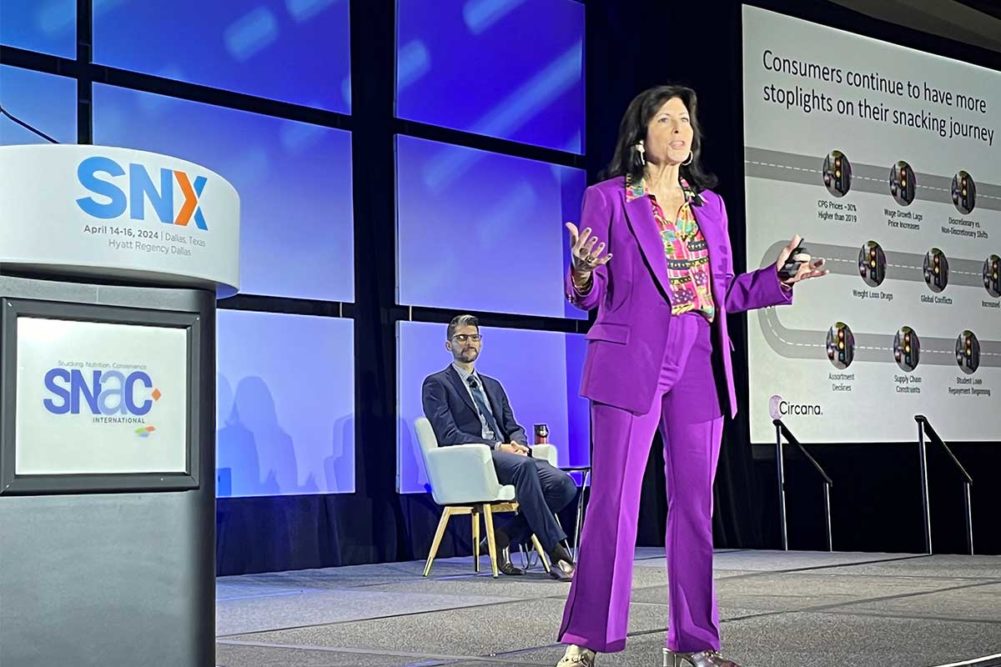DALLAS — Americans are committed to snacking and that trend is not slowing down, but higher prices are forcing consumers to alter some of their buying habits.
“They’re seeing prices that are 30% higher than 2019,” said Sally Lyons Wyatt, global executive vice president and chief adviser consumer goods and foodservice insights, Circana. “That along with the fact that prices have outpaced wage growth. So those two points alone will point you to consumers having to make some changes in how and what they buy because they don’t have the same amount of money to spend, especially if they’re lower-middle income.”
Lyons Wyatt and Darren Seifer, industry analyst, CPG, food consumption and foodservice, Circana, spoke at an educational session, “What’s new with the American consumer?” at SNX, the SNAC International conference held April 14-16 in Dallas.
Looking for better value has led consumers to save money by seeking out smaller packages of their favorite snacks as well as value packs and multi-packs sold at large club stores like Costco.
“From a multi-pack perspective, consumers are definitely gravitating toward that because multi-packs answer so many different things for consumers: pleasing multiple consumers in the home and being able to have for convenience and portion control,” Lyons Wyatt said. “So we have seen the middle mainstream getting squeezed.”
Seifer discussed some of the generational trends in food spending, noting that younger generations are shifting spending from retail to quick-service restaurants since fewer young people do their own cooking. And higher income households are shifting snack spending to quick-service restaurants since they have more disposable income.
“Gen Z are pulling back on snacking a bit but they’re also discovering that as they become adults, they’re not totally sure what to do in the kitchen,” Seifer said. “When they’re going out, they’re thinking, ‘Well, what can I get that I can’t do from home because I don’t know what to do from home much?’ Service becomes a big option for this generation in that life stage.”
He also talked about shifting attitudes among snacking consumers throughout the day. Many often start with something healthy to begin their day right.
“The typical person wakes up in the morning and says, ‘I want to start this day right.’ They might have their banana in the morning as their snack,” Seifer said. “When we get home and we’re done with the day, health just falls out of the picture and that’s where we have our ice cream and our sweet treats most often.”
Budgets are influencing where consumers buy their snacks with low- to middle-income households buying snacks from dollar stores.
Seifer touched on the rise of GLP-1 drugs that are used by diabetics and others interested in weight loss and shared some preliminary data. Although a small percentage of Americans are using them at this time, it’s something that could affect snack sales down the road.
“We estimate that about 4% of adults are on any one of these drugs, so it’s not something that’s pervasive just yet,” Seifer said. “It does seem like a lot of people are on it. … We’re keeping our eyes on it.”
Lyons Wyatt touched on the importance of social media and how it influences the types of snacks consumers are seeking. She said over half of consumers say they want authentic or unique experiences.
“They want to have the experiences, they’re looking for experiences,” she said. “Where do they learn about new items and the trends outside family and friends? It is social media.”





